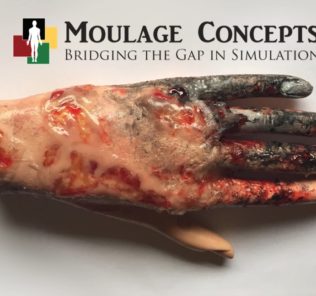11 More Key Terms to Help Your Healthcare Simulation Program Develop Faster
Not too long ago we shared an article entitled 11 Key Terms to Help Colleagues Learn About Healthcare Simulation, and today we continue that trend with nine more key terms that will help your healthcare simulation program develop! From Situational Awareness to Medical Simulators, and from Laerdal’s SimBaby Infant Manikin to SynDaver’s synthetic cadavers, these dedicated pages can be shared with colleagues to give them a better idea about what they represent, why they are important to medical simulation, and what resources are available to help adopt them into regular use! Share away!
Medical Simulators: Medical simulators are extremely important tools within the realms of healthcare simulation and education. These unique products usually represent parts or full-bodied life-like manikins that react to learner actions with real-time physiological responses, as if they were alive. The simulators are used to help educate students, train medical personnel, nurses, doctors, surgeons, anesthetists, midwives, rescue teams, armed forces military personnel and others seeking to practice their clinical skills. Medical Simulators go beyond full body patient simulators to also include smaller low-fidelity task trainers used to train specific skills, high fidelity surgical simulators, OB/GYN simulators and more. Medical simulators can be described as the devices used by healthcare professionals to train on during simulated scenarios.
Situational Awareness: Medical Simulation provides opportunities for learners to identify, practice and evaluate situational awareness (SA) during various clinical events. Healthcare Simulation is particularly useful when those events are rarely encountered during training or routine clinical practice. Medical errors associated with lack of attention, inappropriate interpretation of data and lack of follow up to surrounding activities and equipment are not uncommon. While time-to-task, error identification and other methods have been used to measure clinical performance, many of these methods are costly, depending on the experience of the raters and do not directly consider SA. Clinical Simulation practice to improve situational awareness will increase a learners ability to assess the current environment, understand the significance of the environment and predict future events.
Sponsored Content:
Prebriefing: The term Prebriefing is found extensively in healthcare simulation literature as a component of high fidelity simulation debriefing but its exact meaning varies. The Healthcare Simulation Dictionary from the Society for Simulation in Healthcare suggests three different definitions for the term “Pre briefing” along with another two definitions under the term “Brief (Briefing)” and yet another two under the term “Orientation”. The International Nursing Association for Clinical Simulation and Learning showcases pre-briefing in their Facilitation Standard of Best Practice. Usually such briefings take place inside a Sim Lab of a Simulation Center. A free pre briefing template check list template is provided here too!
Simulation Lab: A simulation lab is designed to provide immersive learning experiences for healthcare practitioners and students. A simulation center, which consist of realistic looking clinical sim lab rooms, manikins and equipment, allow learners to practice and development clinical expertise without any risk of patient harm. Learners apply their theoretical knowledge in carefully created hands-on scenarios that mimic various clinical situations inside these simulation laboratories. These scenarios range in complexity and/or skill level. The greater the similarity (fidelity) of the scenario and simulation laboratory to real life, the more likely the learners will suspend reality and behave as if they are in an actual clinical situation. Clearly designing and building a simulation lab takes much planning and preparation so read this article to learn more now!
Simulation Debriefing: The origins of simulated debriefing began in the military where individuals returning from a mission would give a report about the mission. The information provided could then be used to strategize for future missions or to reduce psychological damage from a traumatic event. In healthcare simulation, debriefing is used to foster discussions in a non-threatening environment, capture and leverage “golden or ah ha” moments, seek similar real-world experiences and help apply the experience to real-world practice. Debriefing is considered a reflective practice since it is a method used to scrutinize a learner’s own assumptions and professional work practices (Kolb 1984). People make sense of external stimuli though internal frames of reference. During debriefing, learners and educators identify these frames of reference (aka mental model) and the learner decides if the frame of reference is appropriate or changes should be made. Ultimately, this may lead to a future change in behavior which in turn, leads to an improvement in clinical practice.
Healthcare Simulation Research Journals (Complete Listings): Medical Simulation is an emerging professional field within healthcare education, training, and patient safety. Healthcare Simulation Research Journals have paved the way for academic exploration, understanding, and evolution of the modern day methodology with numerous unique moving parts including: scenario development, debriefing, facilitation, technology, operations, learning theories, and more. Here we list all of the available medical simulation journals and healthcare simulation research publications available from around the world. Those looking for longer reads should check out our Healthcare Simulation Books page!
Sponsored Content:
SynDaver (Formerly SynDaver Labs): SynDaver Labs is a medical simulation manufacturing company that designs and builds experimentally-validated synthetic human tissues, body parts and human bodies for the purposes of medical education. In providing these products to healthcare simulation programs, the company has developed an extensive catalog of synthetic tissues based on a database of the living tissue properties in humans and animals. This database has been curated over a span of time and is extremely detailed. Now referred to more simply as SynDaver, the Tampa Florida based company was founded in 2004 to commercialize a novel system of synthetic human body parts for the medical device industry, as well as for academic purposes. SynDaver’s products have served as a means of replicating the human anatomy in great detail, and therefore have provided learners across the globe with an alternative means of clinical experience.
SimBaby: Helping improve pediatric critical care through healthcare simulation, SimBaby is a pediatric simulator representing a 9-month-old manufactured by Laerdal Medical. The goal of the medical simulation product is to assist learners in receiving advanced training in all aspects of pediatric care. The new SimBaby is a tether-less manikin which gives learners the ability to practice recognizing and responding to critically ill pediatric patients. Laerdal designed the SimBaby as a highly realistic high-fidelity patient simulator that meets specific learning objectives focusing on initial assessment and treatment. SimBaby is a useful educational training system healthcare providers can use to simulate team-centered, safe, highly-realistic infant care in clinical environments. Utilizing manikins like the SimBaby in simulation labs prepares learners to make critical decisions enabling for teams to practice effective communication and respond to events in real time.
Sim Tech: Within their day-to-day operations, Healthcare Simulation Technicians will assist with the management and operation of patient simulator equipment. They will also perform upkeep and maintenance checks (including equipment servicing and maintenance agreements), trainings, reliability tests and the scheduling of medical simulator performances. They will further use computers and audiovisual equipment to develop and facilitate equipment training for internal and external clients, both on-site and remotely. Training by SimTechs may alternatively be requested in the form of coaching for audiences with varied levels of technical expertise.
Patient Safety: Healthcare Simulation plays an increasing role in creating zero patient harm through medical errors affecting Patient Safety. In the past, healthcare practitioners often learned their skills on actual patients. Today, staff can practice repeatedly in various types of simulation exercises before they ever take a step inside a patient’s room or potentially cause patient harm. Teams can learn communication and other soft skills. New equipment and protocols can be investigated before being generally implemented. Despite significant advances in patient care within the United States and around the world, the number of patients harmed while receiving health care is still unacceptably high. The WHO estimates that patient harm is the 14th leading cause of morbidity and mortality around the world. According to a recent John Hopkins study released in 2016, 250,000 patients die in the US each year from medical errors. Other estimates make the number higher. Medical errors are the third leading cause of death in the US following heart disease and cancer.
Healthcare Simulation Books: Healthcare Simulation Books are a critical component of learning how to develop, expand, and utilize medical simulation methodologies and technologies in professional healthcare institutions to improve learning and patient safety performance outcomes. Everything from audiovisual system design, to manikin hardware, debriefing, patient simulators, nursing simulation, surgical simulation, administrative manuals, Sim Tech guides and more!
Subscribe for More Great Healthcare Simulation Content Today!
Lance Baily, BA, EMT-B, is the Founder / CEO of HealthySimulation.com, which he started in 2010 while serving as the Director of the Nevada System of Higher Education’s Clinical Simulation Center of Las Vegas. Lance also founded SimGHOSTS.org, the world’s only non-profit organization dedicated to supporting professionals operating healthcare simulation technologies. His co-edited Book: “Comprehensive Healthcare Simulation: Operations, Technology, and Innovative Practice” is cited as a key source for professional certification in the industry. Lance’s background also includes serving as a Simulation Technology Specialist for the LA Community College District, EMS fire fighting, Hollywood movie production, rescue diving, and global travel. He and his wife live with their two brilliant daughters and one crazy dachshund in Las Vegas, Nevada.
Sponsored Content:






















